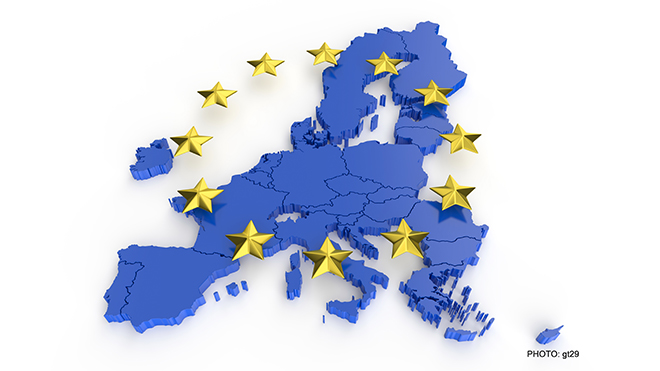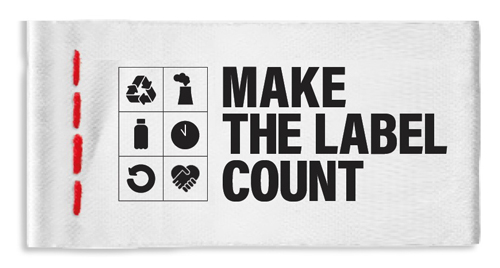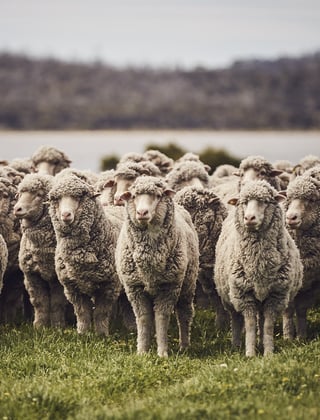AWI advocacy for wool in the European Union

European Union (EU) regulatory proposals for environmental labelling on apparel products currently rate wool and other natural fibres poorly. It is critical that AWI continues to advocate EU policymakers amend the proposals before they become law, especially because other markets across the world could potentially adopt similar initiatives.
As part of the EU’s attempts to shift to a climate-neutral and circular economy, EU policymakers have been working for several years on a tool – the Product Environmental Footprinting (PEF) project – to introduce environmental labelling on apparel products for sale in countries across the EU.
Whilst the objective to guide consumers towards choosing the most sustainable products is laudable, the PEF methodology in its current form, counterintuitively, scores apparel and footwear products made from natural, farmed materials (such as wool) poorly compared to synthetic, mined materials.
Wool is unfairly disadvantaged because the current PEF methodology is narrowly drawn. For example:
- While PEF factors in all the impacts of farming to produce fibre (such as greenhouse gases, water use, land use), PEF counts the impact of fossil fuels only from the well head – meaning synthetics get a big head start.
- PEF doesn’t account for the negatives of synthetic materials, such as microplastic pollution or plastic waste from clothing ending up in landfill.
- PEF doesn’t fully account for the positives of wool, such as biodegradability, renewability, and nature conservation.
The threat to wool and the need for action
The current PEF methodology risks the introduction of greenwashing that will mislead well-intentioned consumers about the environmental impacts of apparel and footwear products – it would encourage them to buy synthetic products in preference to natural products like wool. This could lead to many brands shifting their sourcing away from wool. Therefore, PEF in its current form presents a significant threat to the wool industry.
AWI CEO John Roberts says addressing the biases and limitations within the PEF tool is essential to ensure a fair and accurate assessment of wool's sustainability credentials.
“It is especially important for the Australian wool industry that the PEF methodology is corrected, because the EU currently consumes about a quarter of all Australian wool,” John said.
“Furthermore, due to the EU being the driving force of environmental footprinting, it is anticipated that the PEF initiative could become the most influential market-facing reporting system for environmental credentials, with other markets across the world potentially adopting similar initiatives in their jurisdictions.”
“The PEF proposals as they currently stand are not only a threat to the wool industry, they also ultimately undermine the EU policymakers’ own sustainability objectives and ambition to phase out fast fashion.”
- John Roberts, AWI CEO
AWI’s ongoing advocacy to improve PEF

The Make the Label Count campaign mark.
During the past four years, AWI has been working to address the shortcomings of PEF on two fronts. Firstly, in the European Commission’s PEF Technical Secretariat where AWI has been working with the International Wool Textile Organisation (IWTO) to provide expert advice based on its science and research. Secondly, in advocating to EU policymakers as part of the Make the Label Count campaign.
“Wool was part of the PEF Technical Secretariat right from the start – we went with our sleeves rolled up to positively contribute,” John said.
“The wool team were the only member to bring experts in life cycle assessment (which is the science on which PEF is based), consumer textile research and textile testing research. We undertook targeted research and published peer-reviewed papers to provide a sound evidence-base supporting our proposals.
“However, Cascale (formerly known as SAC, which created the Higg Index) and many of its members – large global fast fashion brands – were also involved from the start and used their power to introduce methodology biased in favour of synthetics, which has been difficult to change. Hence there is a need to raise the concerns with policymakers via the Make the Label Count campaign.”
Through the Make the Label Count campaign, AWI has helped build a global coalition of like-minded natural fibre organisations, environmental NGOs, manufacturers and brands to engage with EU policymakers in the European Commission, Parliament and Council of the EU to advocate for wool and raise awareness of the shortcomings of PEF.
As part of the campaign, there has been widespread responses from thousands of farmers – as well as researchers, brands and industry – to public consultations regarding PEF. See www.fossilfuelfashioncampaign.com/farmers-letter-eu
“To ensure the wool industry is not disadvantaged, it is critical that AWI continues to advocate so that PEF is not used until it's improved."
- John Roberts, AWI CEO
Ecobalyse in France
AWI is also focussing on and addressing alternative rating schemes. For example, France at a national level has been developing its own ratings tool called Ecobalyse, which comes with similar challenges to PEF.
“However, France is more open to methodology improvement that will achieve its policy goals of targeting fast fashion without the inadvertent consequences for wool. AWI has provided robust advice based on science, which is currently being considered by the French for inclusion in their Ecobalyse rating tool. We will continue to work with the French government on improvements to the Ecobalyse tool to ensure it avoids unintended consequences to wool,” John said.
More information: www.makethelabelcount.org
This article appeared in the September 2024 edition of AWI’s Beyond the Bale magazine. Reproduction of the article is encouraged.














